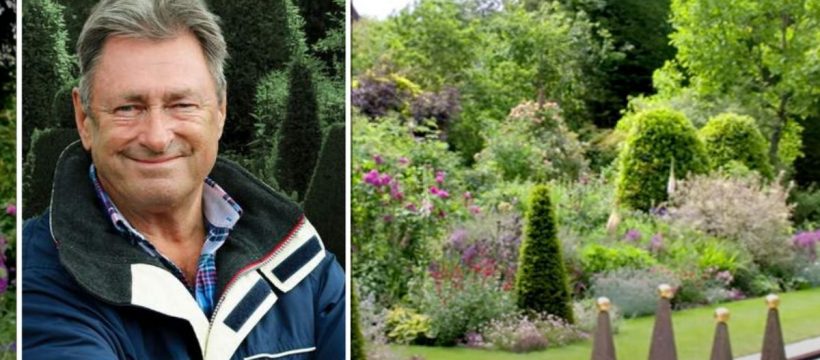
Alan Titchmarsh is a gardening expert with decades of experience under his belt. The nation’s favourite gardener has shared plenty of gardening tips and tricks with viewers to help them achieve their dream garden over his career and his own garden is exactly what you’d imagine.
Alan and his wife Alison live in a gorgeous Grade-II listed Georgian farmhouse in Hampshire, which features a sprawling green space that Alan has spent many years transforming.
Opening up about his garden on the programme Fifty Shades of Green with Alan Titchmarsh back in 2019 for the first time, to celebrate his half-a-century spent in gardens, he introduced viewers to his 50 favourite horticultural spots around Britain, from London’s Kew Gardens, where he worked as a young gardener, to the glorious formal greenery of Sissinghurst Castle in Kent.
But he saved the best till last as the number one spot was Alan’s own garden at his Hampshire home, where he has lived for more than 20 years.

Alan and wife Alison set about creating their dream garden when they bought the house in 2002. The BBC veteran has previously presented TV shows from his past two gardens, but this time he was determined the space would be purely for him and his family, a place of solace and enjoyment.
In 2021, he virtually opened the gates to his garden again in support of the National Garden Scheme to help raise funds for charities during the coronavirus pandemic. He said: “It’s only now that I’ve been happy to let the cameras in for the first time.”
As most would expect from the country’s leading gardening expert, Alan’s outdoor space is absolutely breathtaking. Just a small glimpse of the gardening expert’s home reveals a very romantic, English garden.
Described on the site as a “romantic English garden”, it features a beautiful wildflower meadow that provides a haven for bees and other wildlife and magnificent water features, including more than 10 mini waterfalls.


His flowers and blooms
Rather than safe, soft pastels, Alan plants flowerbeds with a mixture of colours from border perennials, flowering shrubs, roses and trees.
Throughout the garden, roses and topiary are mixed together with ornaments and rare plants to create a picturesque space that seems like it was almost plucked out of the pages of a romance novel.
The terrace and lawns around the house are formal in shape, but he plants the beds in “a billowing mass, the informal planting softening the formal geometry”.
Alan has also implemented a wildflower meadow, which he says is one part of his garden he “prizes more than all the others”, to encourage wildlife into his garden.
Buying an extra two acres, he sowed a wildflower mixture by hand. Now, his greatest delight is watching the meadow (adjacent to a birch grove) change through the seasons, with cowslips in April, through to marjoram and field scabious in summer.





His waterfalls and sculptures
Alan has always loved the neatness of rills – shallow channels of water cut into soil. His own makes a soothing, burbling sound. Alan said: “There is a moment at 11.30am on a June day when the sun shines right down that rill and turns each of those little tiny waterfalls silver, and I can set my watch by it and it’s lovely.”
The rill replaced a row of eight ornamental pear trees which, after 16 years, had grown too big, obscuring views and casting shade – so Alan “bit the bullet” and chopped them down.
At the centre of the circular lawn is a pond with a copy of a sculpture at Kew Gardens, Winged Boy With Dolphin, by the Italian Renaissance artist Andrea del Verrocchio.
It reminds Alan of Kew, where he once worked. The fountain is switched off at night as Alan’s wife says the sound of running water keeps her awake – it comes on again at 7am.
Source: Read Full Article
